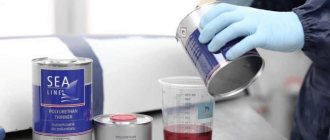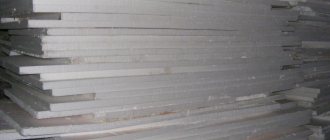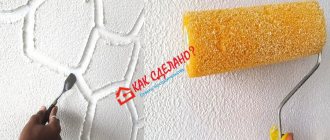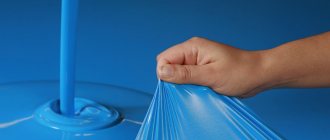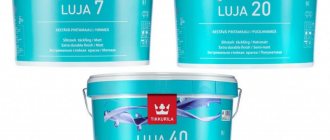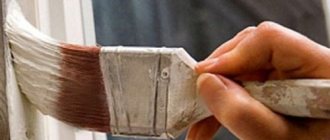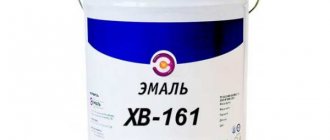All women and girls are constantly worried about their nails, they want them to have an attractive appearance, so they resort to painting their nail plates with varnishes of various colors and shades.
In stores and markets of the 21st century you can find varnishes that will have different compositions and will differ in cost and quality. After some time, such nail coatings tend to thicken and dry out. Some types can thicken in a month, others in six months. But still, representatives of the fair sex have to face such a problem sooner or later. This begs the question: “How can I dilute it?” You will find answers to this and many other important questions in the material below.
Peculiarities
Polyurethane paints and varnishes represent a large group of polymers. The main components are polyols. The second component of polyurethane products are hardeners. As a result of the binding of molecules of paint components, a film is formed that is resistant to moisture, acids, various organic oils and gasoline. Therefore, polyurethane paint has a number of protective properties, due to which it resists negative atmospheric influences on the surface for quite a long time. This suspension is used for finishing indoors and outdoors, as well as for painting various structures.
The paint has a wide temperature range of use - from +150 to -40 degrees. The main features of the composition are high technical characteristics, among which are:
- adhesion equal to 2 points;
- conditional viscosity of 50-90 units;
- the presence of volatile substances in the suspension at a level of no more than 34%;
- the elasticity of the composition on the bend does not exceed 1 mm;
- The hiding power of the dry film is 75 grams/1m2.
To obtain the required color and shade, a coloring pigment is used.
Characteristics
When performing external finishing work, polyurethane enamel is used. This enamel increases the resistance of stone types, since it creates a durable film on its surface that prevents moisture from penetrating inside.
Polyurethane paints have a wide range of applications: from household use to road markings. Two-component compositions will help create interesting effects.
After the applied composition dries, an attractive gloss appears. Unfortunately, the glossy coating emphasizes all the roughness and unevenness, so the surface must be brought to perfect smoothness in advance. There are also enamels that create a matte surface.
The painting procedure is best carried out at temperatures from minus 10 to plus 30. Air humidity does not play any role. The enamel is well applied to concrete even at a humidity close to 95%. The coating itself tolerates temperatures from minus 40 to plus 150. To get good paint adhesion, you need to prime the surface.
Polyurethane paints can be classified according to their composition and the materials for which they are intended. You can apply the paint using a brush or roller, or you can also purchase paint in a spray can.
Metal products are usually spray painted. This method of painting cars allows you to get a uniform color without drips or streaks. Concrete floors are easier to paint with a roller, but wooden surfaces are easier to paint with a brush. Different forms of release of the composition facilitate the task of painting a particular object.
Polyurethane paints are very versatile and are suitable for different types of materials. A primer is a must. This is especially true for metal surfaces.
Wooden surfaces do not need to be primed, but be sure to dry them well. Wood tends to absorb everything, so not a single layer is required. Wood paint is intended mainly for furniture and furniture production.
Those who do not know how or do not want to bother with leveling layers of paint can purchase a self-leveling version of the composition. After application, tension is formed, which ensures uniform spreading of the paint, eliminating the formation of unevenness. The method of application does not matter.
How to remove dried varnish from tools
Listed above are methods that help improve the consistency if the varnish has thickened. But what needs to be done to get rid of varnish on painting tools, and is it possible to remove synthetic compounds after they have been applied?
What to do if the varnish has thickened, and how to dissolve a fairly old composition? Alas, in this case this is not possible. Sanding or sanding will help get rid of the problem if it is at least partially removable. In case of refusal of the mechanical method of processing, solutions are selected individually.
Using so-called washes is one of the simplest options for solving the problem. This substance is a chemical mixture. Available in the form of powders or gels, as well as in liquid form. Acetone can cope with the simplest types of varnishes. Denatured alcohol will help remove shellac. How to restore it is another question.
Here's how to perform the procedure for removing varnish from tools step by step:
- Apply solvent to the surface of the base.
- Wait until the film on the surface begins to soften.
- The treated surface can be covered with polyethylene to speed up the process.
- The old composition begins to swell and darken, after which the exfoliated particles can be removed.
The spatula makes it easier to remove the varnish in its softened form. The main thing is to work carefully so that the surface itself is not damaged. If the composition dries out, work will have to be suspended. Otherwise, there is a risk of defects appearing on the surface, which will then be difficult to get rid of.
To remove varnish residue from painting tools, you can use the following tips:
- Prepare a warm solution of water and soap. This option is suitable for water-based varnishes.
- For other paints and varnishes with an organic base, it is better to use white spirit, kerosene or turpentine. It will not be difficult to rinse off the remaining substance. Then all that remains is to wash the instrument itself with some chemical.
Diluting nail polish is also easy: to do this, you need to lean the container with the composition against the radiator or put it in warm water for a few minutes. Now you know how to thin the varnish. To do this, it is possible to use several different means, then diluting the composition will be much easier.
Solvents for dried varnish (2 videos)
Varnishes and solvents (22 photos)
Compound
Paint of this category is notable for the fact that it creates a strong layer on the surface being treated, protecting the material from damage. The paint is based on polymers and a homogeneous mixture of hardeners and dyes. Each element in the paint contributes to the formation of a durable, moisture-resistant coating.
Often this group of paints is sold in two separate containers, one of which contains the resin, and the other contains the hardener.
Two-component paint has advantages compared to one-component paint:
- more positive reviews than regular paint;
- moisture resistance;
- the ability to prepare the solution in portions, which ensures economical consumption of finishing material.
Polyurethane paint is suitable for covering areas exposed to destructive environmental influences. Water, acids and alkalis will not harm the coating.
Dilution, dilution or dilution?
It may seem that these concepts are identical to each other. But this is a misconception. How to dilute the varnish if it has thickened, and what else can be done in this case, because this situation happens quite often? Use special tools belonging to one of two categories:
- A solvent is a liquid that is named for the effect it has on the substrate. This substance simply transfers the thickened varnish from a solid state to a liquid state.
- Thinner - this product is used when it is necessary to change the viscosity of paints. There are varieties of substances that can act in several roles at once, including being used for breeding.
Some products are effective at performing only one function. For example, white spirit is suitable for diluting the following compositions:
- oil;
- alkyd;
- belonging to the polyurethane group.
When the varnish has completely hardened, white spirit cannot be a solution to the question of what can be used to dilute the varnish. Therefore, we have to look for other options. So-called denatured alcohols equally help to dissolve the varnish and simply obtain a diluted composition.
On video: differences between thinners and solvents for varnishes.
Advantages and disadvantages
Thanks to its unique characteristics, polyurethane paint stands above other types of paints and varnishes. There are a number of positive qualities that make the widespread use of such dyes possible.
- Excellent strength and wear resistance, thanks to which the paint is used in industry.
- Compatible with any surfaces. Compositions are purchased for processing and protecting concrete bases, metal, wooden surfaces, stone, as well as various porous materials.
- No secretions containing substances hazardous to health. This positive feature of the composition is explained by the fact that polyurethane itself is harmless.
- Resistance to the influence of aggressive environments gives coloring products the opportunity to perform their main tasks much longer than other similar products.
The disadvantages of polyurethane paint compositions include their high cost compared to other paints and varnishes, as well as a small selection of options on the market in this category. There are not many similar products on supermarket shelves, so purchasing a product with optimal characteristics can be very difficult.
If the nail polish has thickened: apply thinner
Many companies that make nail polishes also produce thinners. What is a thinner? This is a means through which, when added, the varnish becomes more liquid, restoring its vitality.
It is better to select professional compositions that dilute varnishes. You need to take a small amount of them, and they are able to restore the ability of the varnish to be applied to the nail plate in an even layer, which can never be said about some mass-market class thinners.
Types of paints
Based on their composition, polyurethane paints are divided into two types:
- One-component – immediately containing all the necessary substances (thinners, hardeners, driers, etc.).
- Two-component - before work, requiring mixing of two components from separate containers.
Manufacturers offer several types of paint, let's figure out how they differ from each other.
Polyurethane paint based on organic solvents
Polyurethane based paint
In simple terms, this is ordinary paint modified with polyurethane.
It belongs to the type of one-component paints and consists of several components:
- Polyurethane.
- Solvent (toluene, xylene).
- Coloring pigment.
Hardening or polymerization occurs under the influence of atmospheric moisture, which reacts with the binder components included in the composition.
Important! Dry air in the room does not help the composition set, so surfaces painted with polyurethane paint should not be dried with hot air. Simply put, the higher the humidity in the room, the faster the floor will dry, and vice versa.
Numbered solvents for polyurethane
To dilute the paint, experts recommend using licensed solvents produced specifically for such coatings.
After application to the surface, one-component polyurethane paint gains strength after 48 hours. The coating becomes completely waterproof, especially wear-resistant, and resistant to aggressive environments.
Water-dispersed polyurethane paint
Water-dispersible polyurethane paint is excellent for painting baseboards and walls.
This is a one-component paint that uses plain water instead of a solvent. It has no poisonous odor and is completely harmless when painted.
The components of the mixture are evenly distributed in the aqueous medium and form a stable dispersion. As water evaporates, they gradually move closer together and then stick together upon contact. As a result, we get a thin, durable film that has both decorative and protective properties.
It is purchased mainly for painting walls in rooms with high humidity. Paint for polyurethane stucco molding or baseboards can also be water-dispersed, as it is particularly elastic and does not crack when decorative parts are bent.
Important! Since the paint contains water, it can freeze at low temperatures. After defrosting, technical indicators decrease noticeably.
Alkyd urethane paint
Alkyd-urethane enamel
This one-component paint contains the following components:
- Alkyd-urethane varnish (used to form a film).
- Drying agents for quick drying.
- Thinners.
- Pigments.
- Other targeted additives.
Using polyurethane enamel, you can create decorative and protective films with different textures and degrees of gloss. It is used for both internal and external work. For example, polyurethane floor paint based on alkyd resins can cover both the floor in the garage and paths in the yard.
Applying paint with a roller
The paint is resistant to temperature changes in the range from -60 to +60 degrees, is not afraid of moisture, has excellent abrasion resistance, and is easy to apply with a roller, brush or spray. Thanks to the driers contained in the composition, the paint dries quickly (1.5–2 hours), and when used on metal it serves as an excellent anti-corrosion agent.
Two-component polyurethane paint
Painting a metal roof with two-component polyurethane paint.
It is produced and sold in two containers - separately containing resin and hardener.
The advantages of this division are as follows:
- The ability to prepare the required amount of solution “at one time”, while the remainder does not lose its quality during further storage.
- Curing and polymerization of paint occurs without the participation of moisture.
- The coating is more durable and wear-resistant than when using one-component compounds.
Two-component polyurethane paint is used for surfaces that are particularly susceptible to negative influences. It is resistant to soluble acids, alkalis, oil, various types of fuel, and is not afraid of sea and running water, sewage.
Floor coating with polyurethane paint
Mixing the components with your own hands is done in a separate container with a construction mixer until the composition is completely homogeneous. The prepared mixture has a short lifespan (no more than 6 hours), so the consumption must be calculated in advance, otherwise the remainder will have to be thrown away.
The strength and durability of the coating directly depends on following the mixing recommendations provided by the manufacturer's instructions supplied with the paint. In addition, it indicates the number of possible layers, the type and volume of solvent, and application conditions.
Bitumen mixtures
Bituminous varnish is a mixture of a special grade of bitumen, various resins and oils. After drying, a durable black film is formed on the surface, moisture-resistant and impervious to chemical attack. It is considered a fairly new material in household use. Belongs to the inexpensive category. It is often used as an anti-corrosion protective layer.
For wooden surfaces it is used when there is no need to emphasize the natural texture of the base (instead of paints). Bituminous material has found application as a decorative coating for the effect of aging surfaces (patina). Another unique feature of bitumen mixtures is cold gluing. The bitumen solution is diluted with white spirit.
To prevent it from thickening during storage, the container must be airtight. The storage location should be dark (without direct sunlight), with moderate temperature and humidity.
Bituminous varnish protects the surface very well from moisture and chemical influences, diluted with white spirit
Application methods
Polyurethane compounds are divided into groups both according to their composition and according to the materials requiring processing. Application type can be:
- aerosol;
- using a brush or roller.
Related article: Features of the use of powder paint and its types
Aerosol spraying is most often used when processing metal products. Polyurethane paint for cars provides uniform coverage without streaks or smudges. It is also an excellent alternative to conventional balloon compositions due to its safety margin.
Polyurethane paint for concrete floors is evenly distributed using a roller. The result is a smooth and even coating. But polyurethane paints on wood are best applied with a brush.
What surfaces can be painted?
The materials that require processing are also different. Polyurethane paints are suitable for wood, metal and stone. It is these surfaces that most often require additional protection from external factors. The main thing to remember is the need to prime. This is especially true for metal surfaces. But sometimes floor paint for concrete falls under this rule.
And wood requires high-quality drying. In this case, you can do without a primer. At the same time, the material itself is able to absorb any compounds that are applied to it. Therefore, it is necessary to use several layers; one is not enough.
Polyurethane enamels are fully compatible with stone and adhere well to such a surface. Therefore, no primer is required in this case.
Sometimes buyers simply do not have the time to level a layer of paint with maximum accuracy, or they simply do not have the desire to do such work. Then it’s easier to use paint that levels itself.
Immediately after applying such material, so-called tension appears on the surface. It does not matter whether a roller or other device was used during application. Thanks to the tension, the paint spreads easily and all irregularities disappear.
Is it possible to combine gel polishes from different companies?
Compatibility of gel polishes from different companies is a matter of practice. Theoretically, mixing coatings from several brands may not produce results due to differences in textures and compositions. Manufacturers of the product do not even recommend combining varnish, base, and top coat from different companies, explaining that the result can be unpredictable - for example, after drying, bald spots will appear on the nails, and chips will form during wear.
In practice, it turns out that combining gel polishes from different manufacturers gives a good effect. To make sure of this, experienced nail art masters recommend first mixing gel polishes, then applying the coating to a tip or one nail, drying it, covering it with a top coat, and evaluating the result.
Advice! You should not mix coatings of heterogeneous textures (with glitter, enamels and other non-standard compositions), the result will not be as desired.
Review of manufacturers
Today, the building materials market offers polyurethane paints from many manufacturers. The price per jar depends on the popularity of the brand, volume and shape of the package. The most popular are German, Turkish, and Greek paints. The CIS countries produce products that are not inferior in their characteristics, and their prices are an order of magnitude lower.
Foreign trains are sold at a higher price due to the high cost of transportation and brand recognition. Domestic products undergo serious quality control and have the necessary certificates and licenses. Each type of coating has its own shelf life. It does not matter what type of coating is needed - varnish, enamel or paint. You can safely buy products from Russian brands.
Separately, it is necessary to note polyurethane paints from China. The Celestial Empire represents the largest market for paints and varnishes of any type and purpose.
Thus, paints based on complex polymers not only have a protective function and impart properties such as antistatic, impact resistance, and anti-slip properties to the surface, but also improve the appearance of the coating.
What to consider when choosing?
When faced with the problem of choosing a polyurethane coating, the buyer may get confused among the huge number of options. Paints for the same purpose differ in the types and proportions of components present in the mixture. This can significantly affect the technical characteristics.
For example, there are enamels adapted to low temperatures. Consequently, there is a difference in surface requirements and application conditions. Keep in mind that the shelf life of some one-component formulations does not exceed 6 months.
Features of two-component paints
Most often, polyurethane compounds are sold in two separate containers. One of them contains a hardener, and the other contains a resin. This type of paint can also be produced for concrete. This separation of components has its advantages:
- The ability to obtain a durable, wear-resistant coating. The characteristics are much better than those of standard formulations.
- Humidity does not affect processes such as curing and polymerization.
- It is easy to prepare the solution at once, in the required quantity. With further use, the remaining part does not lose its qualities.
A material such as acrylic paint is perfect for surfaces that are constantly exposed to negative environmental influences. There is additional protection against any acids along with solvents and alkalis. Sea and running water will also not be harmful to the composition. A construction mixer is used to mix the two paint components.
